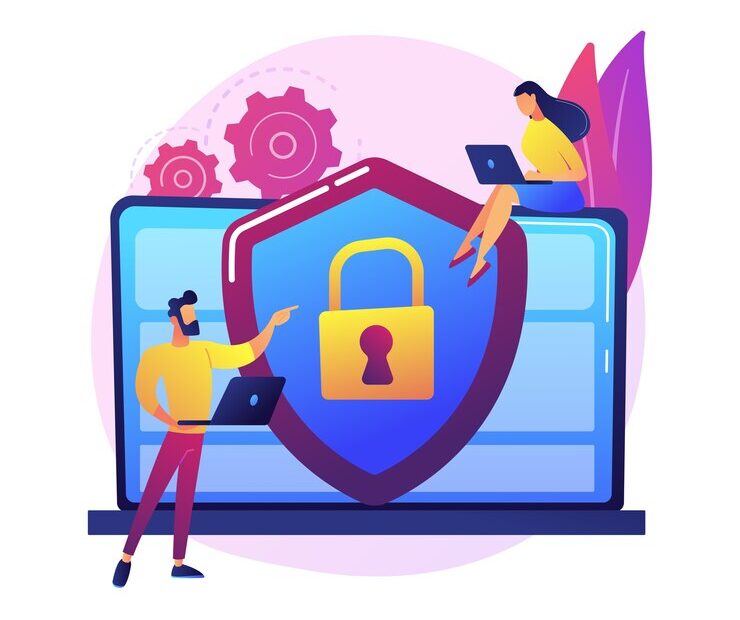In the rapidly evolving landscape of web development, security remains a paramount concern. Protecting applications from threats is critical to maintaining user trust and ensuring the integrity of your data. This article explores various strategies to bolster the security of your web applications, focusing on best practices, tools, and techniques that every developer should consider.
Enozom‘s commitment to security is evident in its comprehensive approach to protecting applications. By integrating security at every stage of the development lifecycle and employing a combination of best practices and advanced tools, Enozom ensures that its applications are resilient against cyber threats. For businesses seeking reliable and secure software solutions, Enozom stands out as a trusted partner dedicated to delivering excellence and peace of mind.
1. Implement Strong Authentication Mechanisms
Multi-Factor Authentication (MFA)
MFA adds an extra layer of security by requiring users to provide two or more verification factors. This can include something the user knows (password), something the user has (security token), and something the user is (biometric verification).
OAuth and OpenID Connect
Using OAuth and OpenID Connect can streamline authentication processes while enhancing security. These protocols allow users to log in using their existing credentials from trusted providers like Google or Facebook, reducing the risk associated with password management.
2. Secure Data Transmission
HTTPS Everywhere
Always use HTTPS to encrypt data transmitted between the client and server. Tools like Let’s Encrypt make it easier to obtain and renew SSL/TLS certificates.
Secure WebSockets
For real-time communication, ensure that WebSockets are secured (wss://) to prevent data interception.
3. Regularly Update and Patch Dependencies
Dependency Management
Use tools like npm-audit, Snyk, or Dependabot to scan for vulnerabilities in your project’s dependencies and apply updates promptly.
Automated Updates
Where possible, automate dependency updates to ensure your application is always running the latest, most secure versions of its libraries and frameworks.
4. Input Validation and Sanitization
Whitelisting
Adopt a whitelist approach for input validation, where only known good data is allowed. This is more secure than blacklisting potentially harmful inputs.
Sanitization
Always sanitize inputs to remove or escape harmful characters. This helps prevent common attacks like SQL injection and cross-site scripting (XSS).
5. Use Secure Coding Practices
Least Privilege Principle
Design your application with the least privilege principle in mind. Give users and components only the access necessary to perform their functions.
Code Reviews
Regular code reviews can help identify security flaws. Automated tools like SonarQube can assist in detecting vulnerabilities early in the development process.
6. Protect Sensitive Data
Encryption at Rest
Encrypt sensitive data stored in databases and file systems to protect it from unauthorized access. Use robust encryption standards like AES-256.
Environment Variables
Store secrets and configuration settings in environment variables or secure vaults, not in your codebase. Tools like HashiCorp Vault or AWS Secrets Manager can help manage secrets securely.
7. Implement Robust Access Controls
Role-Based Access Control (RBAC)
Implement RBAC to manage permissions efficiently. Define roles with specific access rights and assign them to users based on their responsibilities.
Audit Logs
Maintain detailed audit logs of user activities. This helps in tracking potential security incidents and identifying malicious behavior.
8. Monitor and Respond to Threats
Intrusion Detection Systems (IDS)
Deploy IDS to monitor your application for suspicious activities. Tools like Snort or OSSEC can help detect potential security breaches.
Incident Response Plan
Develop and regularly update an incident response plan. Ensure your team knows how to respond swiftly to security incidents to minimize damage.
9. Secure Development Lifecycle (SDL)
Security Training
Provide regular security training for your development team. Keeping everyone informed about the latest threats and best practices is crucial.
Threat Modeling
Incorporate threat modeling into your development lifecycle to identify and mitigate potential security risks during the design phase.
10. Regular Security Audits and Penetration Testing
Third-Party Audits
Engage third-party security experts to conduct regular audits of your application. They can provide an unbiased assessment of your security posture.
Penetration Testing
Conduct regular penetration tests to identify and fix vulnerabilities before attackers can exploit them. Tools like OWASP ZAP and Burp Suite can aid in performing comprehensive tests.
Conclusion
Protecting your web applications requires a multi-faceted approach that encompasses strong authentication, secure data transmission, regular updates, input validation, secure coding practices, and robust access controls. By implementing these strategies, you can significantly reduce the risk of security breaches and ensure that your applications remain safe and reliable. Remember, security is an ongoing process that requires vigilance and continuous improvement.
